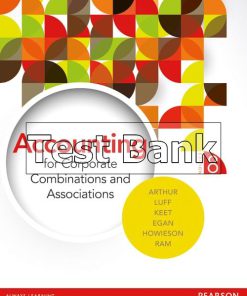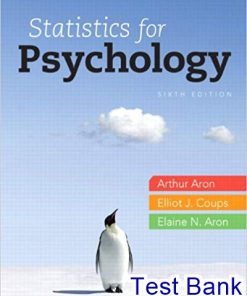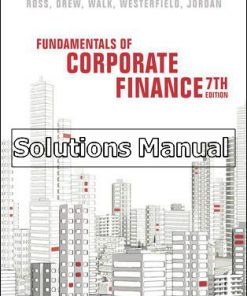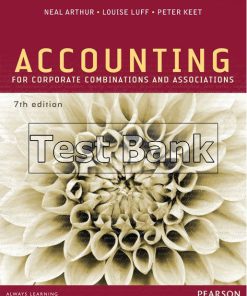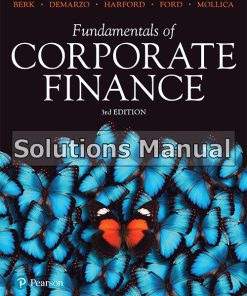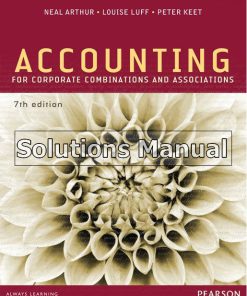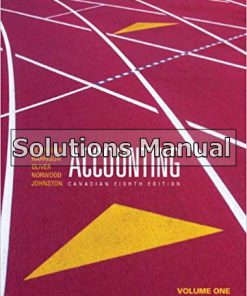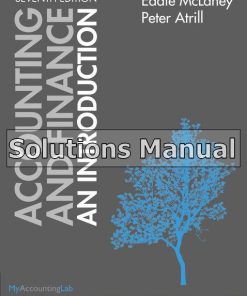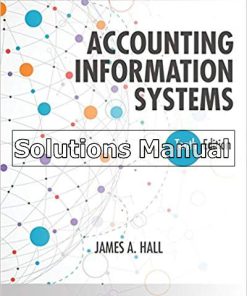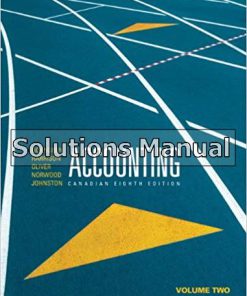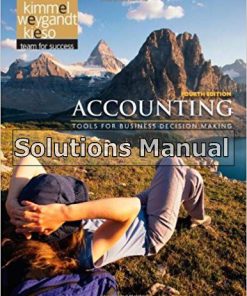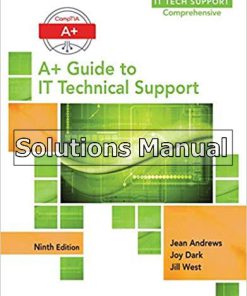Accounting for Corporate Combinations and Associations Australian 8th Edition Arthur Solutions Manual
$26.50$50.00 (-47%)
Accounting for Corporate Combinations and Associations Australian 8th Edition Arthur Solutions Manual.
You may also like
Accounting for Corporate Combinations and Associations Australian 8th Edition Arthur Solutions Manual
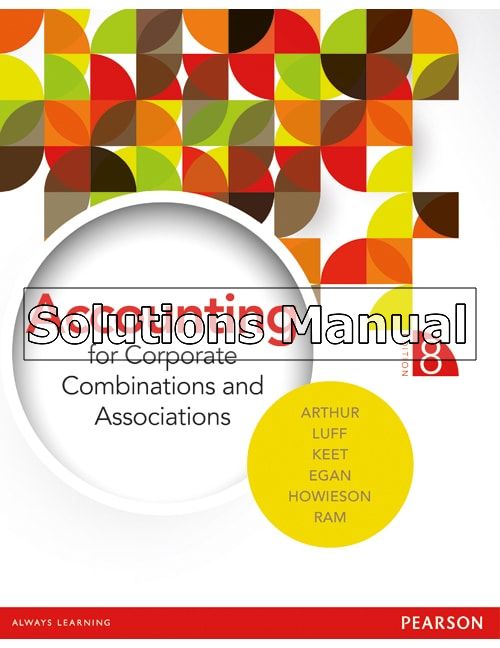
Product details:
ISBN:1488611521
ISBN-13:9781488611520
Author: Peter Keet
Accounting for Corporate Combinations and Associations, 8e is the latest update of this well-known and highly regarded text which provides clear, comprehensive and practical coverage of the process and issues relevant to consolidation accounting. This latest edition is a thorough update which reflects the significant changes to the Australian Accounting Standards, IFRS and Corporations Law that have occurred since the last publication. While working with this text, students learn to explain, execute and evaluate the accounting methods used in consolidations. They will be well equipped to prepare accounts for larger entities, groups and joint ventures. Accounting for Corporate Combinations and Associations, 8e is written for second and third year undergraduate Advanced Financial Accounting, Company Accounting and Consolidated Financial Reporting courses. It is also suitable for students undertaking professional accounting qualifying examinations (in particular the CPA Australia or CA programs).
Table contents:
- Chapter 1 Text objectives and introduction to consolidation
- 1.1 Introduction
- 1.2 Some basic concepts and terminology
- 1.3 Why do entities form groups?
- 1.4 Overview of accounting for different investor–investee relationships
- 1.5 The importance of consolidation accounting
- 1.6 Application and scope of AASB 10
- 1.7 Control
- 1.8 Summary
- 1.9 Consolidation questions
- 1.10 References
- 1.11 Endnotes
- Chapter 2 Principles of consolidation
- 2.1 Introduction
- 2.2 The consolidation process—an overview
- 2.3 Elimination of the parent’s investment in subsidiary asset
- 2.4 Introduction to goodwill or gain on bargain purchase
- 2.5 Elimination of intragroup dividends
- 2.6 Summary of the consolidation process
- 2.7 Comprehensive examples
- 2.8 Consolidation questions and exercises
- 2.9 References
- Chapter 3 Fair value adjustments and tax effects
- 3.1 Introduction
- 3.2 AASB 3 Business Combinations
- 3.3 Consolidated financial statements and AASB 112 Income Taxes
- 3.4 Allocation of the cost of a business combination
- 3.5 Acquisition of a business operation
- 3.6 Further issues concerning the acquisition of a subsidiary
- 3.7 Comprehensive example—acquisition of a subsidiary
- 3.8 Accounting for reverse acquisitions
- 3.9 Consolidation questions and exercises
- 3.10 References
- Chapter 4 Intragroup transactions
- 4.1 Introduction
- 4.2 Intragroup services
- 4.3 Intragroup borrowing and lending
- 4.4 Intragroup sales of inventories
- 4.5 Intragroup transfers of non-current assets
- 4.6 Comprehensive example
- 4.7 Consolidation questions and exercises
- Chapter 5 Non-controlling interest
- 5.1 Introduction
- 5.2 Nature of non-controlling interest
- 5.3 Disclosure and measurement of non-controlling interest
- 5.4 Consolidation of partly owned subsidiaries
- 5.5 Negative non-controlling interest
- 5.6 Preference shares and the calculation of non-controlling interest
- 5.7 Consolidation questions and exercises
- 5.8 References
- Chapter 6 Partly owned subsidiaries: indirect non-controlling interest
- 6.1 Introduction
- 6.2 Ownership interests in a group
- 6.3 Consolidation of multiple subsidiaries
- 6.4 Applied issues
- 6.5 Consolidation questions and exercises
- 6.6 References
- Chapter 7 Consolidated cash flow statements
- 7.1 Introduction
- 7.2 Identifying and reporting cash flows
- 7.3 Preparation of a statement of cash flows
- 7.4 The consolidation issue
- 7.5 Consolidation questions and exercises
- 7.6 References
- Chapter 8 Accounting for joint arrangements
- 8.1 Introduction
- 8.2 Background to AASB 11
- 8.3 Nature and types of joint arrangements
- 8.4 Accounting for joint operations
- 8.5 Evaluation of the one-line and line-by-line methods
- 8.6 Accounting for a production joint operation
- 8.7 Transactions between joint operators
- 8.8 Revaluation of a joint operator’s remaining interest in a non-current asset
- 8.9 Note disclosures for joint arrangements
- 8.10 Consolidation questions and exercises
- 8.11 References
- Chapter 9 Accounting for associates and joint ventures—the equity method
- 9.1 Introduction
- 9.2 Judging whether to apply equity accounting
- 9.3 The equity method of accounting
- 9.4 Presentation of equity accounting information
- 9.5 Other equity accounting issues
- 9.6 Impairment losses
- 9.7 The tax effect of the equity carrying amount of an investment
- 9.8 Comprehensive example of equity accounting—one associate
- 9.9 Note disclosures for associates
- 9.10 Example of equity accounting—two associates
- 9.11 Consolidation questions and exercises
- 9.12 References
- 9.13 Endnotes
- Chapter 10 Translation and consolidation of foreign currency financial statements
- 10.1 Introduction
- 10.2 Important concepts
- 10.3 Translation methods for statements of comprehensive income and statements of financial position
- 10.4 The history of Australian accounting standards
- 10.5 Determining the functional currency
- 10.6 Presentation currency
- 10.7 Translation into the presentation currency
- 10.8 Translation into the functional currency
- 10.9 Critical evaluation of translation requirements
- 10.10 Translation of statement of cash flows
- 10.11 Consolidation of the translated statement of comprehensive income and translated statement of
- 10.12 Consolidation of the translated statement of cash flows
- 10.13 Applying equity accounting to foreign operations
- 10.14 Applied issues in the translation of foreign currency financial statements
- 10.15 Consolidation questions and exercises
- 10.16 References
- Chapter 11 Segment reporting by diversified entities
- 11.1 Introduction
- 11.2 Background to AASB 8
- 11.3 Reportable segments
- 11.4 Measurement of segment data items
- 11.5 Disclosure of segment information
- 11.6 Example of segment reporting disclosures
- 11.7 Consolidation questions and exercises
- 11.8 References
- Index
People also search:
accounting for corporate combinations and associations australian 8th
accounting for corporate combinations and associations australian 8th edition
accounting for corporate combinations and associations australian 8th pdf
accounting for corporate combinations and associations australian 8th pdf free
accounting for corporate combinations and associations australian 8th download scribd

